Last Updated on November 14, 2023
Bathroom sinks can quickly become cluttered with slime and residue from drainage that’s hard to tackle without the right cleaning solutions. Don’t worry, though. You can get those grimy build-ups out of your sink in several ways. No harsh chemicals are required.
Home-made cleaners made with baking soda, vinegar, and salt are an effective way to tackle this issue, as well as commercial drain cleaners. Whatever you choose, say goodbye to nasty slime build-up in no time at all.
We will provide step-by-step instructions on how to clean slime build-up in the bathroom sink with a homemade cleaning solution and instructions for using a commercial drain cleaner. Follow our step-by-step instructions for slime buildup removal success.
How to Clean Slime Build Up In Bathroom Sink: Only 6 DIY Steps
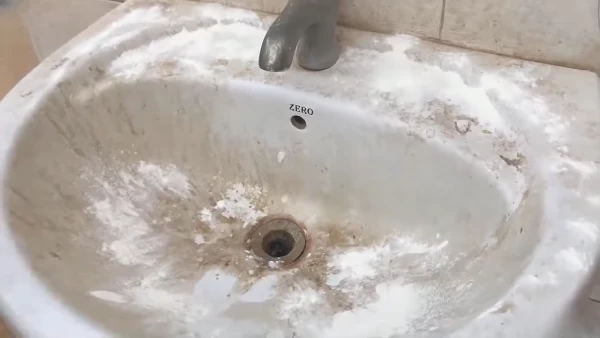
Cleaning up slime buildup in a bathroom sink can be a difficult and tedious task, but making your own homemade cleaner can make the process easier and more efficient. Let’s look at some of the ingredients you’ll need and how to use them effectively.
Step 1: Remove the Bathroom Sink Stopper
To begin the process of cleaning slime build-up in a bathroom sink with a homemade cleaner, the first step is to remove the sink stopper. You just need to pull up on the stopper or unscrew it.
Once this has been done, you will need to turn off the drain supply where the water will go. This can be done by turning off the lever that is located next to the drain pipe.
Step 2: Pour Boiling Water
Pour 1/2 gallon of boiling water into your bathroom sink once you’ve removed the stopper. The hot water will help break down any soap scum or grime that may have built up around the drain opening over time and make it easier for your cleaner to work its magic on any slime buildup inside the pipes.
Also, flush out the old standing water from inside the drain before pouring fresh boiling water into it. Otherwise, you won’t get as much out of your cleaning efforts.
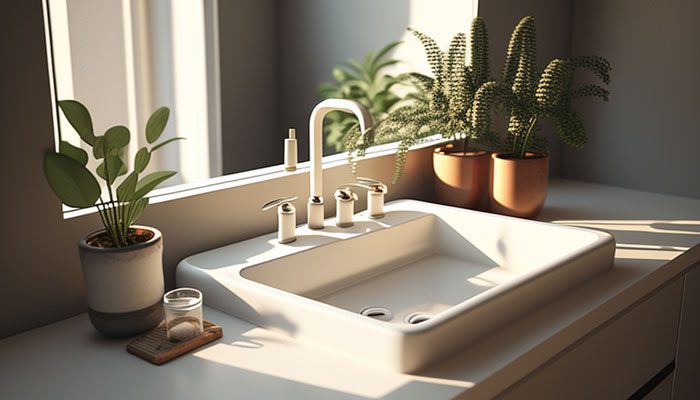
Step 3: Pour Baking Soda
The next step is to add 1 cup of baking soda directly into your drain pipe where all of the hot water was poured previously. Baking soda works wonders when removing burn marks, grease, and other stubborn deposits from plumbing fixtures due to its abrasive properties.
Leave the mixture in your drainpipe for at least five minutes before continuing with the other steps. This will give it enough time to break down and loosen any built-up grime or residue inside of your pipes.
Step 4: Pour White Vinegar
After sprinkling baking soda down over your bathroom sink’s drain pipe, pour 1 cup of white vinegar directly onto it as well.
This will create a bubbling reaction between both substances, which helps further break down any lingering gunk. The mixture also contains an acid element that helps eliminate bad odors caused by bacteria growth in the pipes and their surroundings over time.
Step 5: Wait for An Hour
Now that both solutions have had their chance to really get in deep and break down whatever dirt has been building up inside those pipes over time. Let it sit there undisturbed for at least one hour while they continue working its magic.
This will give ample opportunity for all residue or grime particles caught within these plumbing fixtures enough time to dissolve completely away. Leaving nothing but cleanliness behind.
Step 6: Rinse the Drain
Finally, after waiting patiently long enough, rinse out these pipes thoroughly. Don’t forget to turn on the drain supply line. Then, pour a half gallon of boiling hot water directly down them again.
This should clear away any remaining residue from within these drains as well as flush out whatever else may still remain within them. No nasty slime buildup is left behind, just sparkling cleanliness.
Another Home-Made Cleaning Solution to Try
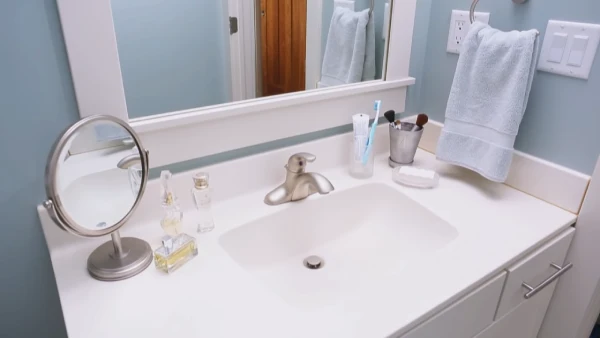
Another homemade cleaner that can be used to help clean bathroom sink slime is a mixture of salt, baking soda, and tartar. Let’s look at the instructions in more detail.
To begin, you will need to remove the sink stopper from the bathroom sink. Ensure you don’t pull too hard, as it can get damaged or stuck. Once removed, boiling water should be poured into the drain to help loosen the slime build-up and start breaking it down.
The next step is to make a homemade cleaning solution that consists of ¼ cup of salt, ¼ cup of baking soda, and 1 teaspoon of cream of tartar mixed together in a bowl.
Mix everything together until it’s all incorporated. Then, pour this mixture into the sink drain and allow it to sit for 15 minutes so that it can start breaking down and loosening any remaining slime build-up.
After this time has passed, flush half a gallon of boiling water down the drain to clear out any filth removed with the homemade cleaner. The hot water will also help dissolve any leftover residue so that no extra scrubbing is needed when you’re finished.
After all the steps have been completed, run some cold water for about 30 seconds to ensure that all remnants have been washed away.
Use Commercial Drain Cleaner to Clean Bathroom Sink Slime
Using commercial drain cleaners is also an excellent solution for this issue. They are specially designed to break down and dissolve the stubborn slime, restoring the drain to its original condition. Here’s how to use a commercial drain cleaner:
First, it is important to select the right type of cleaner for your needs. There are many different types of commercial cleaners available, so it is essential to read labels and choose one that best suits your needs.
For example, some cleaners are specifically formulated for grease or food buildup, while others work better on hair clogs. It is also important to pay attention to any safety warnings on the product label before use.
Next, prepare the area where you will be working. Remove any items away from the sink, like soap dishes or toothbrush holders and make sure there is nothing blocking access to the drain pipe.

Don’t forget to wear protective clothing such as gloves and goggles when handling any chemical products.
Then, pour the recommended amount of drain cleaner into the sink according to the manufacturer’s directions. Once poured, leave it to work for at least half an hour before continuing with further steps.
Depending on how severe the slime buildup is in your sink, you may need to repeat this step several times over a few days for optimal results.
After enough time has passed, run hot water through your pipes again to flush out any remaining residue. By following these simple steps, you can help ensure that all slime build-up in your bathroom sink is effectively removed and prevent future clogs.
Why Does Bathroom Sink Slime Build Up and How to Prevent It?
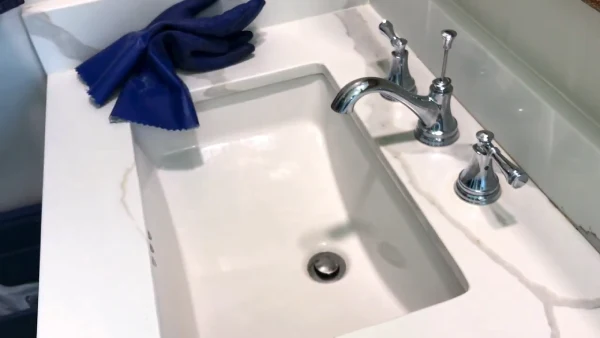
The main cause of slime build-up in bathroom sinks is the accumulation of organic waste on the walls of the pipes.
Organic debris, such as food particles, hair, toothpaste, soap scum, and other solid matter, can become stuck on the sides of pipes and accumulate over time.
This buildup becomes attractive food sources for bacteria that live in moist environments like bathrooms, leading to large colonies forming over time and producing what we know as “slime.”
The best way to prevent this from happening is by taking proactive steps before it becomes an issue. This means cleaning your sink regularly (once or twice a week).
To do this effectively, you will need to use hot water and some form of cleaner, such as vinegar or a commercial product specifically designed for cleaning bathroom sinks.
Make sure to pay attention to any corners or crevices where the organic matter may be hiding. These are often hotspots for bacterial growth and should be scrubbed thoroughly with a brush or sponge.
You should also avoid leaving any organic materials like food scraps or hair clippings in your sink. Bacteria will break these down and make more organic waste, contributing to slime and bacterial buildup.
How Hot Should the Water Be When Cleaning Bathroom Sink Slime?

The water temperature recommended for removing slime from a bathroom sink varies based on the type of pipe.
For PVC pipes, it is best to use water that is heated to around 140 degrees Fahrenheit, whereas for metal pipes, it is safe to use slightly hotter water. But don’t pour too much-boiling water down the sink since it could cause damage.
Is Borax Good for Cleaning Bathroom Sink Slime?
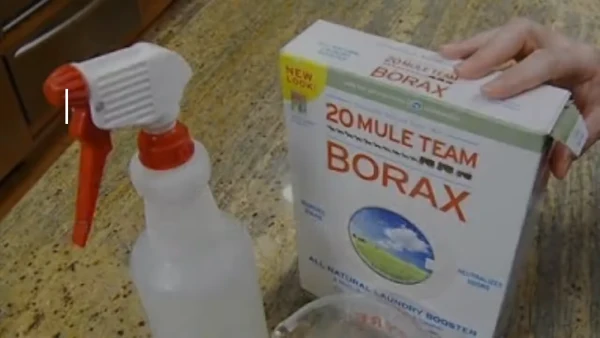
Borax is an effective cleanser and can help to break down and remove the buildup of slime in a bathroom sink.
To utilize Borax in this way, combine ¼ cup of salt, ¼ cup of Borax, and ½ cup of vinegar in hot water. Then let it sit for at least an hour until the sludge has been removed. After that, rinse off with fresh running water.
Is It Safe to Use Bleach to Clear Slime from the Bathroom Sink?
It is generally not considered safe to pour bleach directly into your bathroom sink drain, as raw bleach can do significant harm to your pipes and fixtures.
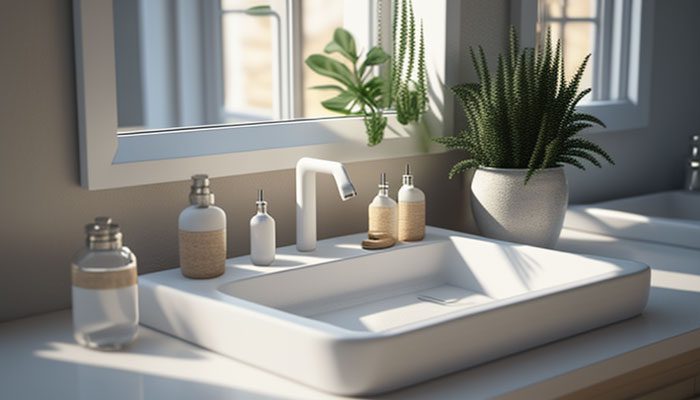
If you must use bleach, it should be done with caution by mixing a very small amount with lots of water before pouring it down the drain. It is always best to first consider other cleaning options, such as using a mixture of borax and vinegar, which are much gentler on plumbing systems than pure bleach.
Conquer Bathroom Slime with Natural or Commercial Solutions
Cleaning slime buildup in your bathroom sink doesn’t have to be a daunting task. You can use either homemade or store-bought options depending on how severe the build-up is. For mild cases of slime buildup, a combination of baking soda, salt, and tartar works great as an all-natural cleaner.
Alternatively, you could opt for a commercial drain cleaner to more effectively remove any stubborn slime from your bathroom sink.
No matter which solution you choose, taking care of slime buildup promptly will help keep your bathroom looking its best.

